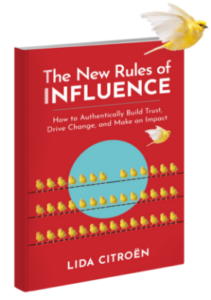Guest Blog by Kathi Kruse, speaker, social media, digital marketing consultant, and owner of Kruse Control

In this world of cheap knockoffs, hidden agendas and mud-filled transparency, the reality is that not
Pick your online friends carefullyall social media connections are created equal. We’re searching for authenticity in ourselves and our network and that leads to craving more meaningful interactions. The winds of change are upon us. The new trend in social media is to be more deliberate about connections in favor of quality over quantity.
Regardless of what commands our attention, value is the driver in everything we do. Now that social media has matured, users and companies are beginning to discover that a larger number of social network connections may be less valuable than a smaller, more intimate circle.
I spent the better part of last weekend purging my Facebook friends list. I’d been thinking about it for a very long time (maybe you have, too?) because my newsfeed was cluttered with either meaningless noise or offensive rhetoric.
The catalyst for my purge party was a satirical post I shared referencing the well-known 79% wage gap between men and women:

Some goofball connection of mine actually wanted to argue about the validity of this wage gap stat. After listening and responding to a few of his comments, and taking the time to figure out that he was not interested in a civil, informed, adult conversation, I deleted them.
I always give people the benefit of the doubt but I’ve been a community manager/content strategist/monitor for a long time now and I’m pretty good at spotting hidden agendas. I don’t expect people to agree with me but I do expect authenticity and civility.
My goal for being on social media is to always bring value to conversations.
I’m not perfect but I do try hard to answer these questions before I post:

On social media, I also aim to:
- Represent my personal brand
- Advocate for animals
- Share pictures of my cat Jack (and sometimes my other cat, Sammy)
- Network with like-minded business people
- Learn from others to improve my business
- Get inspiration for my blog
- Market and advertise my social media strategy and training business, Kruse Control.
After the exchange on the wage-gap post, I realized that life is too short to be connected to people who don’t share my goals. Who knows, that guy might have thought he was bringing value to a conversation. What he needs to do now is go find where that conversation is. It’s certainly not on my Facebook page.
There had been growing evidence over that past few months that I needed to “thin the herd” of Facebook connections.
So, I started out with 2,867 friends. The strategy that I once used for connecting with people is not the strategy I use now. My former strategy was to welcome anyone from within the automotive industry because I believed we could network and refer each other. Clearly, this was naive. I have since been much more discriminating about who I invite into my world.
If you’re considering a clean up, here’s the most efficient way I found to purge connections:
I pulled up the mobile site on my desktop (m.facebook.com) and clicked on the Friends tab. Then I opened another window with regular Facebook so I could look up the connections in question. The friends list on the mobile site begins with those you interact with most so it was easy to scroll past them and see all the others who I didn’t recognize or interact with.
I spent about 8 hours over 4 days and when I was done going through every single one of those unfamiliar connections, I had cleaned out about 700 people. And WOW, you cannot believe some of the stuff I saw in those profiles! I can’t believe I was ever connected to people so full of hatred!
The result is that my newsfeed has better, more relevant content now and the conversations are civil, interesting and in some cases, inspiring.
I’ve also noticed that every person I mentioned my purge party to said, “Oh my gosh, I’ve got to do that!”
We have a new trend in social media now.
In the salad days of social media (2013 and prior), most everyone was positive, friendly and helpful. Now that it’s grown up, social media more closely reflects the state of our culture – all the positive and all the negative.
- People are much more willing to post things that they would never say in person now.
- Unsuspecting users blindly share fake posts.
- Ego-driven individuals post disingenuous information that suits their ideology.
This new trend in social media is a move toward deeper and more meaningful connections. Not everyone has the same goals for social media so isn’t it smarter to take the time to design who you really want to interact with?
Here are 5 tips to help you downsize your connections and improve your experience on social media:
- Solidify who you are as a personal brand. Don’t take to the airwaves without standing firm in what you believe in and how you want to be known in the world.
- Set goals for why you are on social media. Determine the reasons you’re on social media and act with your goals in mind.
- Employ the “Am I delivering value?” filter to your actions. Before you start a post or reply, answer those questions (Is it kind? Is it necessary? Is it true?) and do everything you can to bring value to the conversation.
- Keep your house clean and purge when needed. Decide your criteria for maintaining connections. Refer back to your goals for social media and unplug from anyone who isn’t delivering value.
- If you’re a business, laser focus on your target audience.
Now that Facebook has developed a reliable, relevant, paid solution with never-before-seen targeting capabilities, it’s no longer necessary to focus on quantity of audience for social marketing success. Social ad targeting now makes it easier and more efficient to focus on quality of audience.
Prior to 2013 or so, the game on Facebook and Twitter was to collect likes and followers — vanity metrics. The more you had, the better chance your content would be seen by an audience predisposed to respond.
But with social ad targeting capabilities available in these platforms today, you can now serve the content to the right audience, not just a broad, best guess group that might include them.
When it comes to social networking, bigger is rarely better.
A big network, goes the argument, gives you reach and, potentially, that holy grail of “influence.” But with an enormous collection of friends or followers on a network, you lose the benefits of intimacy, discoverability, and trust, all of which can work better when you have fewer connections.

